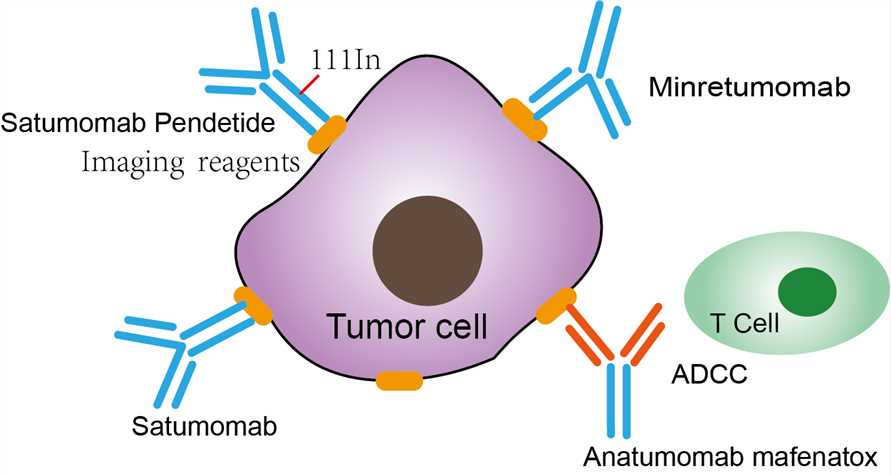Minretumomab Overview
Introduction of Minretumomab
Minretumomab, also known as CC49, is a second-generation murine monoclonal antibody based on the antibody B72.3 that is directed against tumor-associated glycoprotein 72 (TAG-72). Minretumomab was designed for the treatment of breast, colon, lung, and pancreatic cancers. However, there are less clinical trials about it. Minretumomab is a murine antibody that cannot be used as a therapeutic antibody in human directly. Thus, the derivatives like chimeric and humanized minretumomab, a fusion protein of a minretumomab single-chain variable fragment and the enzyme beta-lactamase have been investigated in pharmaceutical research. In addition, dot-conjugated minretumomab also has been used in the in vitro gastric cancer cell imaging. Iodine-125-labeled minretumomab is also used to detect tumors in radioimmunoassay such as CA 72-4. Radiolabeled minretumomab has also been studied for tumor treatment, but has not shown any anti-tumor response.
Mechanism of Action of Minretumomab
Minretumomab is a protein optimized by monoclonal antibody (MAb) B72.3 antibody, which is produced in the membrane enrichment part of human breast cancer biopsy tissue. Minretumomab is designed to target TAG-72 to play a biological role. TAG-72 is a membrane-bound glycoprotein with mucin-like properties and highly expressed on the surface of a variety of tumor cells. It was found that TAG-72 was expressed in 80% of colorectal cancer tissues, but relatively less in normal mucosa. In addition, the expression rate of TAG-72 in ovarian cancer (26.0%) was significantly higher than that in normal ovarian tissue (0) (P < 0.05), and its expression was related to the clinical stage and differentiation of ovarian cancer. In prostate cancer, the expression of TAG-72 is also more active. In view of its high activity in tumor cells, TAG-72 is also considered to be a tumor marker. Researchers have developed some monoclonal analysis methods for TAG-72 to promote the diagnosis of cancer. The mechanism of the anti-tumor effect of minretumomab may be through the combination of TAG-72, but the specific mechanism remains to be further studied.

Fig.1 Mechanism of action of minretumomab
For research use only. Not intended for any clinical use.
This site is protected by reCAPTCHA and the Google Privacy Policy and Terms of Service apply.



